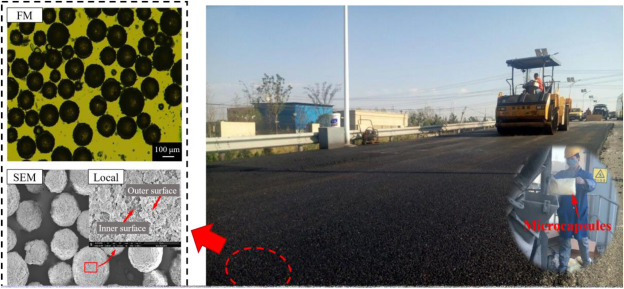Self-Healing Nanocoatings for Corrosion Protection
Chemistry
A self-healing nanocoating that can protect metal surfaces from corrosion and damage, extending the lifespan of industrial equipment and infrastructure.
The self-healing nanocoating is a thin, transparent layer of nanomaterials applied to metal surfaces to prevent corrosion and damage. This innovative coating utilizes nanocapsules containing a healing agent, typically a type of silane or organosilane, which are dispersed within a polymer matrix. When the coating is damaged, the nanocapsules rupture, releasing the healing agent to react with the metal surface and reform a protective layer. The nanocoating's self-healing properties are based on the principles of microencapsulation and the release of active corrosion inhibitors.The nanocoating's composition typically includes a mixture of nanoparticles, such as silicon dioxide or titanium dioxide, and a polymer binder, such as polyurethane or epoxy. The nanoparticles provide a high surface area and reactivity, allowing for efficient interaction with the metal surface, while the polymer binder offers mechanical strength and adhesion to the substrate. The nanocapsules, typically 100-500 nanometers in diameter, are designed to release their contents in response to changes in the coating's environment, such as temperature, humidity, or mechanical stress.The self-healing mechanism of the nanocoating involves a complex series of chemical reactions and physical processes. When the coating is damaged, the nanocapsules rupture, releasing the healing agent, which then reacts with the metal surface to form a new protective layer. This process is often catalyzed by the presence of metal ions or other environmental factors. The resulting protective layer is highly effective at preventing corrosion and damage, and can be designed to provide long-term protection against a range of environmental conditions.The benefits of the self-healing nanocoating include extended lifespan of industrial equipment and infrastructure, reduced maintenance costs, and improved safety. By preventing corrosion and damage, the nanocoating can help to prevent equipment failure, reduce downtime, and minimize the need for costly repairs. Additionally, the nanocoating's self-healing properties can provide a sustainable solution for industries such as aerospace, automotive, and construction, where corrosion and damage can have significant economic and environmental impacts.
The self-healing nanocoating can be used in the oil and gas industry to protect pipelines and storage tanks from corrosion, reducing the risk of leaks and environmental damage.
It can be applied to the aerospace industry to protect aircraft and spacecraft from corrosion and damage caused by exposure to harsh environments, improving safety and reducing maintenance costs.
The nanocoating can be used in the automotive industry to protect vehicle components from corrosion, extending the lifespan of cars and reducing the need for costly repairs.
It has potential applications in the construction industry to protect building infrastructure, such as steel beams and bridges, from corrosion and damage, improving public safety and reducing maintenance costs.
The self-healing nanocoating can be used in the marine industry to protect ships and boats from corrosion and damage caused by exposure to seawater, reducing the risk of costly repairs and downtime.
It can be applied to the energy industry to protect wind turbines and solar panels from corrosion and damage, improving efficiency and reducing maintenance costs.
The nanocoating has potential applications in the medical industry to protect medical equipment and implants from corrosion and damage, improving patient safety and reducing the risk of device failure.
It can be used in the manufacturing industry to protect machinery and equipment from corrosion and damage, reducing downtime and improving productivity.

World Economic Forum
Software, Audio and visual technology
View Patent
